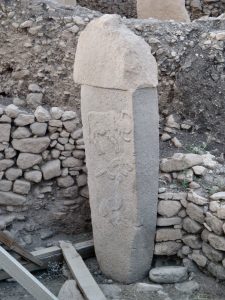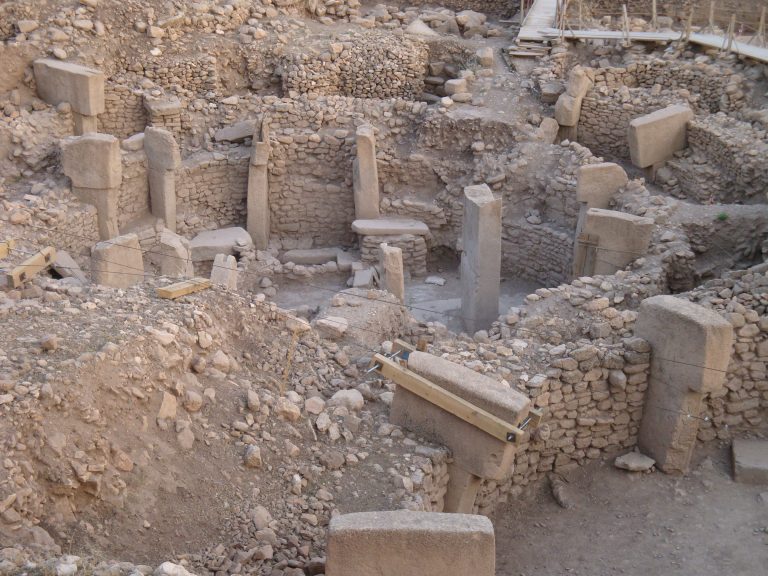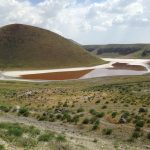“Potbelly Hill”
Barely known until the 2010s, the archaeological site at Göbeklitepe, near Şanlıurfa, hit the big-time when it featured in Newsweek as “the Rome of the Ice Age” according to Klaus Schmidt, the German archaeologist who had been working there for 12 years until his death in 2014.
This astonishing site in the middle of nowhere appears to have consisted of a series of circular temples filled with T-shaped pillars, some of them carved with arms and hands, others decorated with images of animals.
To glimpse them is to remember the great statues on Easter Island but the staggering thing about Göbeklitepe is that it appears to date back 11,500 years, making it perhaps the oldest building ever found and certainly the earliest temple (in contrast the Easter Island statues are a mere 1,000 years old). It is credited to what is known as the Pre-Pottery Neolithic era.
No evidence of a settlement was initially found near the site which led Schmidt and others to suggest turning received wisdom on its head. Previously archaeologists assumed that settlements preceded organised religious worship, and that hunter-gatherers settled down and became farmers before thinking about creating temples. In Schmidt’s view, however, Göbeklitepe might suggest that those hunter-gatherers actually came together to create places of worship before starting to build towns and villages. Since then, however, archaeologists have uncovered the elusive signs of settlement nearby.
The undamaged state of the pillars also seemed to suggest that the temples were deliberately covered up some 10,000 years ago. Schmidt seemed to believe that the descendants of the people who built the temples eventually grew disillusioned with their gods and so covered over the temple. However, more recent work at the site suggests that soil slippage could on its own account for the burial of the T-pillars.
Like Stonehenge, Göbeklitepe will probably continue to exist in a swirl of conflicting theories and fantasies. However, excavation work in the area has accelerated since 2014, resulting in the discovery of many other sites featuring the same T-shaped pillars at Ayanlar Höyük, Hamzan Tepe, Harbetsuvan Tepe Karahantepe, Kurt Tepe, Nevalı Çori, Sayburç, Sefer Tepe, Taşlı Tepe and in the Yeni Mahalle of Şanlıurfa, known collectively as the Taş Tepeler (Stone Hills). Göbeklitepe is now a UNESCO world heritage site and protected by a shelter.
Sleeping
The nearest decent choice of places to stay is in Urfa.
Transport info
There is no public transport but local tour companies in Şanlıurfa should be able to organise a trip to Göbeklitepe and the other sites for you.
Comparatively speaking…
Göbeklitepe is:
- 10,000 years older than the Belkis-Zeugma mosaics
- 7,500 years older than the Pyramids
- 7,000 years older than Stonehenge
- 6,000 years older than the Megalithic temples on Malta
- 4,000 years older than Çatalhöyük



